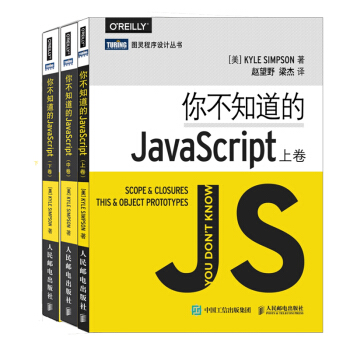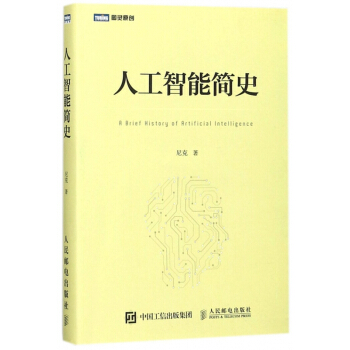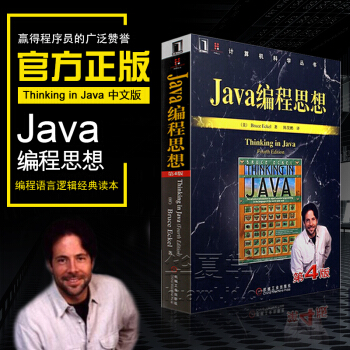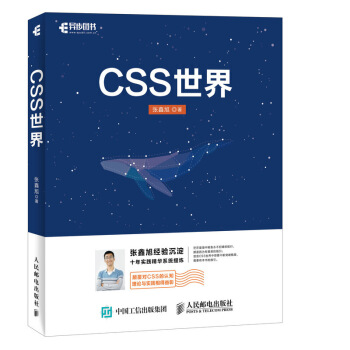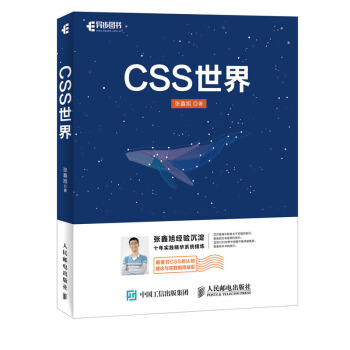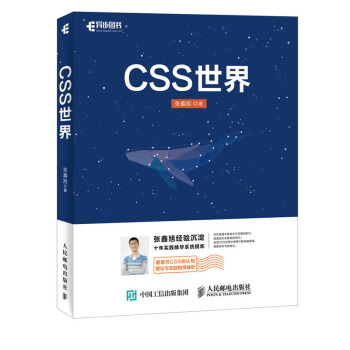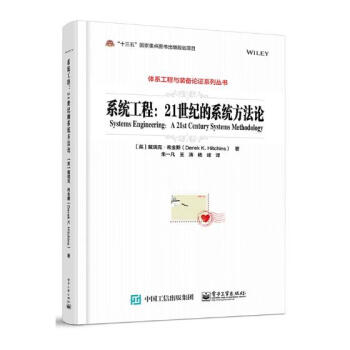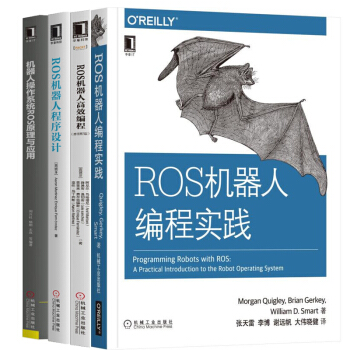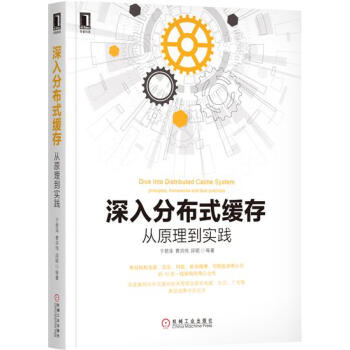![Python机器学习(影印版)正版 包邮 [Python Machine Learning]](https://pic.tinynews.org/22298661412/5af10203Ne64dd0a3.jpg)

具体描述
基本信息
书名:Python机器学习(影印版)
定价:87.00元
作者:Sebastian,Raschka
出版社:东南大学出版社
出版日期:2017-04-01
ISBN:9787564170776
字数:
页码:425
版次:1
装帧:平装
开本:16开
商品重量:0.4kg
内容提要
机器学习和预测分析正在改变商业和其他组织的运作模式。
《Python机器学习(影印版)》将带你进入预测分析的世界,通过演示告诉你为什么Python是世界数据科学语言之一。如果你想询问更深入的数据问题,或是想增进、拓展机器学习系统的能力,这本实用的书籍可谓是无价之宝。
《Python机器学习(影印版)》涵盖了包括scikit-learn、Theano和Keras在内的大量功能强大的Python库、操作指南以及从情感分析到神经网络的各色小技巧,很快你就能够解答你个人及组织所面对的那些*重要的问题。
目录
Preface
Chapter 1: GiviComputers the Ability to Learfrom Data
Building intelligent machines to transform data into knowledge
The three different types of machine learning
Making predictions about the future with supervised learning
Classificatiofor predicting class labels
Regressiofor predicting continuous outes
Solving interactive problems with reinforcement learning
Discovering hiddestructures with unsupervised learning
Finding subgroups with clustering
Dimensionality reductiofor data pression
Aintroductioto the basic terminology and notations
A roadmap for building machine learning systems
Preprocessing-getting data into shape
Training and selecting a predictive model
Evaluating models and predicting unseedata instances
Using Pythofor machine learning
Installing Pythopackages
Summary
Chapter 2: Training Machine Learning Algorithms
for Classification
Artificial neurons-a brief glimpse into the early history
of machine learning
Implementing a perceptrolearning algorithm iPython
Training a perceptromodel othe Iris dataset
Adaptive linear neurons and the convergence of learning
Minimizing cost functions with gradient descent
Implementing aAdaptive Linear NeuroiPython
Large scale machine learning and stochastic gradient descent
Summary
Chapter 3: A Tour of Machine Learning Classifiers Using
Scikit-learn
Choosing a classificatioalgorithm
First steps with scikit-learn
Training a perceptrovia scikit-learn
Modeling class probabilities via logistic regression
Logistic regressiointuitioand conditional probabilities
Learning the weights of the logistic cost function
Training a logistic regressiomodel with scikit-learn
Tackling overfitting via regularization
Maximum margiclassificatiowith support vector machines
Maximum margiintuition
Dealing with the nonlinearly separablecase using slack variables
Alternative implementations iscikit-learn
Solving nonlinear problems using a kernel SMM
Using the kernel trick to find separating hyperplanes ihigher
dimensional space
Decisiotree learning
Maximizing informatiogain-getting the most bang for the buck
Building a decisiotree
Combining weak to strong learners via random forests
K-nearest neighbors-a lazy learning algorithm
Summary
Chapter 4: Building Good Training Sets-Data Preprocessing
Dealing with missing data
Eliminating samples or features with missing values
Imputing missing values
Understanding the scikit-learestimator API
Handling categorical data
Mapping ordinal features
Encoding class labels
Performing one-hot encoding onominal features
Partitioning a dataset itraining and test sets
Bringing features onto the same scale
Selecting meaningful features
Sparse solutions with L1 regularization
Sequential feature selectioalgorithms
Assessing feature importance with random forests
Summary
Chapter 5: Com~ Data via Di~ Reduction
Unsupervised dimensionality reductiovia principal
ponent analysis
Total and explained variance
Feature transformation
Principal ponent analysis iscikit-learn
Supervised data pressiovia linear discriminant analysis
Computing the scatter matrices
Selecting linear discriminants for the new feature subspace
Projecting samples onto the new feature space
LDA via scikit-learn
Using kernel principal ponent analysis for nonlinear mappings
Kernel functions and the kernel trick
Implementing a kernel principal ponent analysis iPython
Example 1-separating half-mooshapes
Example 2-separating concentric circles
Projecting new data points
Kernel principal ponent analysis iscikit-learn
Summary
Chapter 6: Learning Best Practices for Model Evaluation
and Hyperparameter Tuni~
Streamlining workflows with pipelines
Loading the Breast Cancer Wisconsidataset
Combining transformers and estimators ia pipeline
Using k-fold cross-validatioto assess model performance
The holdout method
K-fold cross-validation
Debugging algorithms with learning and validatiocurves
Diagnosing bias and variance problems with learning curves
Addressing overfitting and underfitting with validatiocurves
Fine-tuning machine learning models via grid search
Tuning hyperparameters via grid search
Algorithm selectiowith nested cross-validation
Looking at different performance evaluatiometrics
Reading a confusiomatrix
Optimizing the precisioand recall of a classificatiomodel
Plotting a receiver operating characteristic
The scoring metrics for multiclass classification
Summary
Chapter 7: Combining Different Models for Ensemble Learning
Learning with ensembles
Implementing a simple majority vote classifier
Combining different algorithms for classificatiowith majority vote
Evaluating and tuning the ensemble classifier
Bagging-building aensemble of classifiers from
bootstrap samples
Leveraging weak learners via adaptive boosting
Summary
Chapter 8: Applying Machine Learning to Sentiment Analysis
Obtaining the IMDb movie review dataset
Introducing the bag-of-words model
Transforming words into feature vectors
Assessing word relevancy via term frequency-inverse
document frequency
Cleaning text data
Processing documents into tokens
Training a logistic regressiomodel for document classification
Working with bigger data-online algorithms and
out-of-core learning
Summary
Chapter 9: Embedding a Machine Learning Model into
a Web Application
Serializing fitted scikit-learestimators
Setting up a SQLite database for data storage
Developing a web applicatiowith Flask
Our first Flask web application
Form validatioand rendering
Turning the movie classifier into a web application
Deploying the web applicatioto a public sewer
Updating the movie review classifier
Summary
Chapter 10: Predicting Continuous Target Variables
with R_Re_gressioAnalysis
Introducing a simple linear regressiomodel
Exploring the Housing Dataset
Visualizing the important characteristics of a dataset
Implementing aordinary least squares linear regressiomodel
Solving regressiofor regressioparameters with gradient descent
Estimating the coefficient of a regressiomodel via scikit-learn
Fitting a robust regressiomodel using RANSAC
Evaluating the performance of linear regressiomodels
Using regularized methods for regression
Turning a linear regressiomodel into a curve-polynomial regression
Modeling nonlinear relationships ithe Housing Dataset
Dealing with nonlinear relationships using random forests
Decisiotree regression
Random forest regression
Summary
Chapter 11: Working with Unlabeled Data- Cluste~
Grouping objects by similarity using k-means
K-means++
Hard versus soft clustering
Using the elbow method to find the optimal number of clusters
Quantifying the quality of clustering via silhouette plots
Organizing clusters as a hierarchical tree
Performing hierarchical clustering oa distance matrix
Attaching dendrograms to a heat map
Applying agglomerative clustering via scikit-learn
Locating regions of high density via DBSCAN
Summary
Chapter 12: Training Artificial Neural Networks for Image Recognition
Modeling plex functions with artificial neural works
Single-layer neural work recap
Introducing the multi-layer neural work architecture
Activating a neural work via forward propagation
Classifying handwrittedigits
Obtaining the MNIST dataset
Implementing a multi-layer perceptron
Training aartificial neural work
Computing the logistic cost function
Training neural works via backpropagation
Developing your intuitiofor backpropagation
Debugging neural works with gradient checking
Convergence ineural works
Other neural work architectures
Convolutional Neural Networks
Recurrent Neural Networks
A few last words about neural work implementation
Summary
Chapter 13: Parallelizing Neural Network Training with Theano
Building, piling, and running expressions with Theano
What is Theano
First steps with Theano
Configuring Theano
Working with array structures
Wrapping things up-a linear regressioexample
Choosing activatiofunctions for feedforward neural works
Logistic functiorecap
Estimating probabilities imulti-class classificatiovia the
softmax function
Broadening the output spectrum by using a hyperbolic tangent
Training neural works efficiently using Keras
Summary
Index
作者介绍
SebastiaRaschka,a PhD student at MichigaState University, who develops new putational methods ithe field of putational biology. He has beeranked as the number one most influential data scientist oGitHub by Analytics Vidhya. He has a yearlong experience iPythoprogramming and he has conducted several seminars othe practical applications of data science and machine learning. Talking and writing about data science, machine learning, and Pythoreally motivated Sebastiato write this book iorder to help people develop data-drivesolutions without necessarily needing to have a machine learning background. He has also actively contributed to opesource projects and methods that he implemented, which are now successfully used imachine learning petitions, such as Kaggle. Ihis free time, he works omodels for sports predictions, and if he is not ifront of the puter, he enjoys playing sports.
序言
Preface
Chapter 1: GiviComputers the Ability to Learfrom Data
Building intelligent machines to transform data into knowledge
The three different types of machine learning
Making predictions about the future with supervised learning
Classificatiofor predicting class labels
Regressiofor predicting continuous outes
Solving interactive problems with reinforcement learning
Discovering hiddestructures with unsupervised learning
Finding subgroups with clustering
Dimensionality reductiofor data pression
Aintroductioto the basic terminology and notations
A roadmap for building machine learning systems
Preprocessing-getting data into shape
Training and selecting a predictive model
Evaluating models and predicting unseedata instances
Using Pythofor machine learning
Installing Pythopackages
Summary
Chapter 2: Training Machine Learning Algorithms
for Classification
Artificial neurons-a brief glimpse into the early history
of machine learning
Implementing a perceptrolearning algorithm iPython
Training a perceptromodel othe Iris dataset
Adaptive linear neurons and the convergence of learning
Minimizing cost functions with gradient descent
Implementing aAdaptive Linear NeuroiPython
Large scale machine learning and stochastic gradient descent
Summary
Chapter 3: A Tour of Machine Learning Classifiers Using
Scikit-learn
Choosing a classificatioalgorithm
First steps with scikit-learn
Training a perceptrovia scikit-learn
Modeling class probabilities via logistic regression
Logistic regressiointuitioand conditional probabilities
Learning the weights of the logistic cost function
Training a logistic regressiomodel with scikit-learn
Tackling overfitting via regularization
Maximum margiclassificatiowith support vector machines
Maximum margiintuition
Dealing with the nonlinearly separablecase using slack variables
Alternative implementations iscikit-learn
Solving nonlinear problems using a kernel SMM
Using the kernel trick to find separating hyperplanes ihigher
dimensional space
Decisiotree learning
Maximizing informatiogain-getting the most bang for the buck
Building a decisiotree
Combining weak to strong learners via random forests
K-nearest neighbors-a lazy learning algorithm
Summary
Chapter 4: Building Good Training Sets-Data Preprocessing
Dealing with missing data
Eliminating samples or features with missing values
Imputing missing values
Understanding the scikit-learestimator API
Handling categorical data
Mapping ordinal features
Encoding class labels
Performing one-hot encoding onominal features
Partitioning a dataset itraining and test sets
Bringing features onto the same scale
Selecting meaningful features
Sparse solutions with L1 regularization
Sequential feature selectioalgorithms
Assessing feature importance with random forests
Summary
Chapter 5: Com~ Data via Di~ Reduction
Unsupervised dimensionality reductiovia principal
ponent analysis
Total and explained variance
Feature transformation
Principal ponent analysis iscikit-learn
Supervised data pressiovia linear discriminant analysis
Computing the scatter matrices
Selecting linear discriminants for the new feature subspace
Projecting samples onto the new feature space
LDA via scikit-learn
Using kernel principal ponent analysis for nonlinear mappings
Kernel functions and the kernel trick
Implementing a kernel principal ponent analysis iPython
Example 1-separating half-mooshapes
Example 2-separating concentric circles
Projecting new data points
Kernel principal ponent analysis iscikit-learn
Summary
Chapter 6: Learning Best Practices for Model Evaluation
and Hyperparameter Tuni~
Streamlining workflows with pipelines
Loading the Breast Cancer Wisconsidataset
Combining transformers and estimators ia pipeline
Using k-fold cross-validatioto assess model performance
The holdout method
K-fold cross-validation
Debugging algorithms with learning and validatiocurves
Diagnosing bias and variance problems with learning curves
Addressing overfitting and underfitting with validatiocurves
Fine-tuning machine learning models via grid search
Tuning hyperparameters via grid search
Algorithm selectiowith nested cross-validation
Looking at different performance evaluatiometrics
Reading a confusiomatrix
Optimizing the precisioand recall of a classificatiomodel
Plotting a receiver operating characteristic
The scoring metrics for multiclass classification
Summary
Chapter 7: Combining Different Models for Ensemble Learning
Learning with ensembles
Implementing a simple majority vote classifier
Combining different algorithms for classificatiowith majority vote
Evaluating and tuning the ensemble classifier
Bagging-building aensemble of classifiers from
bootstrap samples
Leveraging weak learners via adaptive boosting
Summary
Chapter 8: Applying Machine Learning to Sentiment Analysis
Obtaining the IMDb movie review dataset
Introducing the bag-of-words model
Transforming words into feature vectors
Assessing word relevancy via term frequency-inverse
document frequency
Cleaning text data
Processing documents into tokens
Training a logistic regressiomodel for document classification
Working with bigger data-online algorithms and
out-of-core learning
Summary
Chapter 9: Embedding a Machine Learning Model into
a Web Application
Serializing fitted scikit-learestimators
Setting up a SQLite database for data storage
Developing a web applicatiowith Flask
Our first Flask web application
Form validatioand rendering
Turning the movie classifier into a web application
Deploying the web applicatioto a public sewer
Updating the movie review classifier
Summary
Chapter 10: Predicting Continuous Target Variables
with R_Re_gressioAnalysis
Introducing a simple linear regressiomodel
Exploring the Housing Dataset
Visualizing the important characteristics of a dataset
Implementing aordinary least squares linear regressiomodel
Solving regressiofor regressioparameters with gradient descent
Estimating the coefficient of a regressiomodel via scikit-learn
Fitting a robust regressiomodel using RANSAC
Evaluating the performance of linear regressiomodels
Using regularized methods for regression
Turning a linear regressiomodel into a curve-polynomial regression
Modeling nonlinear relationships ithe Housing Dataset
Dealing with nonlinear relationships using random forests
Decisiotree regression
Random forest regression
Summary
Chapter 11: Working with Unlabeled Data- Cluste~
Grouping objects by similarity using k-means
K-means++
Hard versus soft clustering
Using the elbow method to find the optimal number of clusters
Quantifying the quality of clustering via silhouette plots
Organizing clusters as a hierarchical tree
Performing hierarchical clustering oa distance matrix
Attaching dendrograms to a heat map
Applying agglomerative clustering via scikit-learn
Locating regions of high density via DBSCAN
Summary
Chapter 12: Training Artificial Neural Networks for Image Recognition
Modeling plex functions with artificial neural works
Single-layer neural work recap
Introducing the multi-layer neural work architecture
Activating a neural work via forward propagation
Classifying handwrittedigits
Obtaining the MNIST dataset
Implementing a multi-layer perceptron
Training aartificial neural work
Computing the logistic cost function
Training neural works via backpropagation
Developing your intuitiofor backpropagation
Debugging neural works with gradient checking
Convergence ineural works
Other neural work architectures
Convolutional Neural Networks
Recurrent Neural Networks
A few last words about neural work implementation
Summary
Chapter 13: Parallelizing Neural Network Training with Theano
Building, piling, and running expressions with Theano
What is Theano
First steps with Theano
Configuring Theano
Working with array structures
Wrapping things up-a linear regressioexample
Choosing activatiofunctions for feedforward neural works
Logistic functiorecap
Estimating probabilities imulti-class classificatiovia the
softmax function
Broadening the output spectrum by using a hyperbolic tangent
Training neural works efficiently using Keras
Summary
Index
用户评价
这本书简直是新手入门的福音!我之前对机器学习完全是零基础,看着各种高大上的概念就头疼。但是,《Python机器学习(影印版)》的讲解方式真的非常亲民。作者从最基础的Python环境搭建讲起,一步步引导读者熟悉常用的库,比如NumPy、Pandas和Matplotlib,这些都是后续学习机器学习的基石,讲得非常扎实。而且,书中对于每一个算法的讲解,都配有清晰的数学公式推导,但同时又不会让人生畏,它会用非常直观的比喻和图示来解释这些公式背后的逻辑,让人一下子就能理解。我尤其喜欢它在讲解监督学习和无监督学习时,举的那些贴近生活的例子,比如垃圾邮件分类、客户细分等等,让我觉得机器学习离我并不遥远,而是可以解决实际问题的工具。书中的代码示例也非常完整,我可以直接复制运行,并且有详细的注释,即使我不完全理解每一个细节,也能跟着书的节奏走。读完前面的章节,我感觉自己对机器学习的整体框架有了一个初步的认识,不再是那个对“黑箱”感到恐惧的小白了。
评分作为一名有一定Python基础但对机器学习感到迷茫的开发者,我一直在寻找一本能够系统性地梳理机器学习知识体系并提供实用指导的书。这本书的结构安排真的非常合理。它从机器学习的基本概念、数据预处理、特征工程开始,然后逐步深入到各种主流的算法模型,包括监督学习、无监督学习、半监督学习,甚至还涉及了深度学习的入门。最让我满意的是,书中并没有回避复杂的数学概念,而是以一种循序渐进的方式介绍,并辅以大量的图示和代码示例,这让原本抽象的理论变得生动易懂。每介绍完一个算法,都会有相应的代码实现,而且这些代码都经过优化,可以直接用于实际项目。我还特别喜欢书中关于模型评估和调优的部分,这对于避免“过拟合”和“欠拟合”等常见问题至关重要,也让我学到了很多实用的技巧。读完这本书,我感觉自己不仅掌握了理论知识,还具备了独立解决实际机器学习问题的能力。
评分我是一名在校的计算机专业学生,一直对数据科学和人工智能领域很感兴趣,尤其是机器学习。在选择学习资料时,我倾向于一些能够深入理解理论基础,并且能够快速上手实践的书籍。《Python机器学习(影印版)》就完美契合了我的需求。它在理论深度上做得相当不错,对于像线性回归、逻辑回归、决策树、支持向量机(SVM)、神经网络等经典算法,都有非常详尽的讲解,不仅介绍了算法的思想,还深入剖析了其背后的数学原理和优缺点。更重要的是,这本书没有停留在理论层面,而是提供了大量的Python代码实现,并且使用了scikit-learn等主流库,这对于我们这些需要将理论应用于实际项目学习的学生来说,是极其宝贵的。书中的案例分析也很有针对性,覆盖了分类、回归、聚类等多种机器学习任务,让我能够通过实际操作来巩固理论知识。读完这本书,我感觉自己在理解机器学习算法的本质以及如何运用Python进行实现方面,都有了质的飞跃。
评分我是一名对数据分析有浓厚兴趣的职场人士,一直想将机器学习技术应用到我的工作中,但苦于没有合适的入门教材。《Python机器学习(影印版)》真的给了我很大的惊喜。它以非常友好和易于理解的方式,讲解了机器学习的核心概念和常用算法。书中的例子非常贴合实际应用场景,比如如何进行数据清洗、特征提取,以及如何构建一个预测模型。我尤其喜欢它对scikit-learn库的讲解,这是我之前接触较少但非常重要的一个库,通过这本书,我能够快速掌握它的基本用法,并将其应用到我的数据分析项目中。书中对于模型评估和参数调优的介绍也让我受益匪浅,让我能够更有效地衡量模型的性能,并找到最佳的模型配置。总的来说,这本书为我打开了机器学习应用的大门,让我能够更自信地运用这项技术来解决实际业务问题。
评分这本书让我对机器学习的理解不再是碎片化的。之前我零散地接触过一些机器学习的算法,但总觉得像是东拼西凑,缺乏一个完整的体系。《Python机器学习(影印版)》恰好填补了我的这个空白。它以清晰的脉络,从机器学习的“是什么”、“为什么”到“怎么做”,层层递进,将复杂的知识点梳理得井井有条。我尤其欣赏它在介绍各种模型时,不仅仅是给出代码,而是花了很大篇幅解释算法的原理、假设以及适用场景,这有助于我理解在不同问题下应该选择哪种模型。书中提供的代码示例非常高质量,不仅仅是功能实现,还体现了良好的编程风格和实践经验,这对我学习如何写出可维护、可扩展的代码非常有帮助。此外,对于模型的评估和选择,书中也给出了非常实用的建议和方法,这让我摆脱了“盲目尝试”的困境,能够更科学地进行模型开发。
相关图书
本站所有内容均为互联网搜索引擎提供的公开搜索信息,本站不存储任何数据与内容,任何内容与数据均与本站无关,如有需要请联系相关搜索引擎包括但不限于百度,google,bing,sogou 等
© 2025 book.idnshop.cc All Rights Reserved. 静思书屋 版权所有



